
views
X
Research source
While the shock can be both healthy for you and help you lose weight, it can be quite hard to deal with.[2]
X
Research source
Fortunately, there are ways to help your body get used to it.
Adjusting Slowly
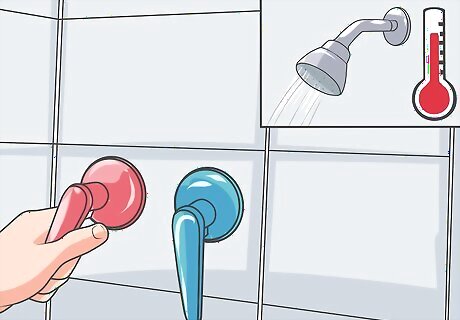
Heat your shower or bath normally. Assuming you aren't constrained to immediately adjusting in a cold pool or during an open water swim, you can use your shower or bath to gradually train your body to adjust to the cold. Turn on your water and allow it to warm up.
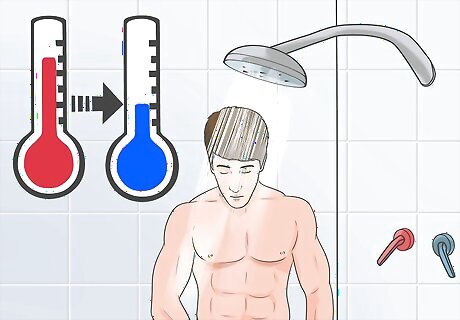
Step into the shower. Since the water is warm, this shouldn't be hard at all. Make sure that your hands, feet, and face are all wet, since most of your heat and cold receptors are there. After a few moments, turn the temperature down slightly and shower as normal.
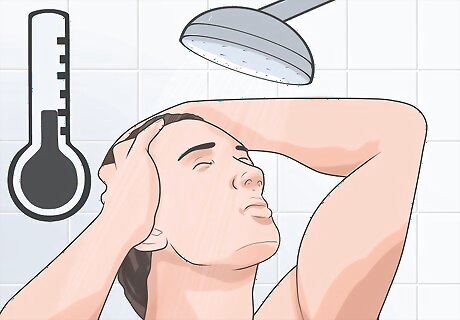
Once you have adjusted, turn the temperature down again. Remember, you aren't trying to shock yourself - this is the gradual method of getting used to cold water! At this point, you should be finishing up your shower just in time to adjust to your second temperature change. If you find yourself comfortable though, or needing more time to shower, feel free to drop the temperature a third time.
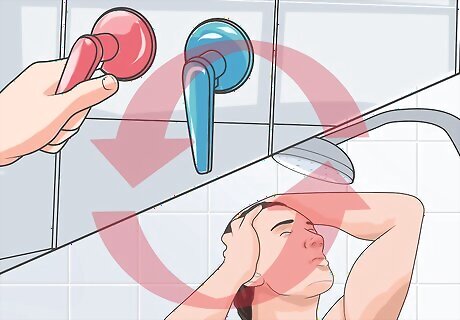
Repeat this process daily. Each day you should find that the temperature drops are a little bit easier. This indicates that your body is getting used to the process and is doing a better job of thermoregulation.

Lower your starting temperature. Once you have a few days or a week of this process under your belt and the temperature drops aren't as intimidating, lower the starting temperature of your shower. You'll now start the shower at the temperature of your first temperature drop... and your last temperature drop will be colder than you've ever had it before.

Repeat every week or few days. The exact timing will be different for everyone, depending on how fit you are and how much body fat you have. Ironically, the best body type for this is one that is both in shape and fat! Whenever you are ready, continue to lower your starting temperature again. Before you know it, you'll be comfortable at temperatures that were downright shocking to you before.
Jumping Right In
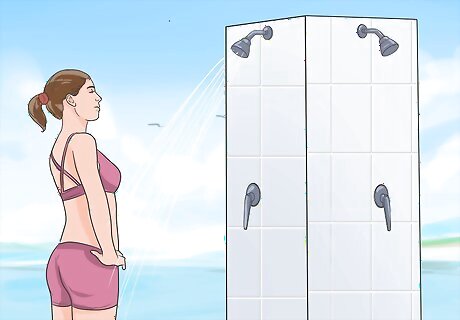
Get the water ready. Of course, if you are doing this outdoors or in a cold pool, it'll be ready in advance. This method is short and sweet, and is especially great for both swimmers and athletes who will be using ice baths to help them recover from activity. Once your water is ready, get your mind ready for the shock.
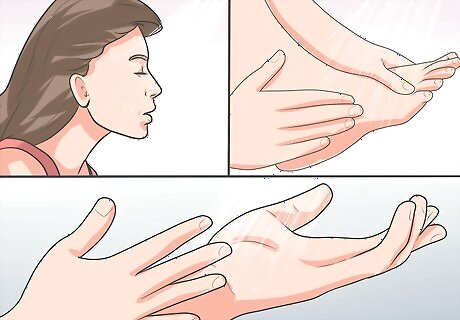
Get your face, ears, hands, and feet wet. Since most of your sensory receptors are in these areas they are the most important to overcoming the shock. This is an easy way to get started if you don't yet have the mental strength to jump right in quite yet. If you can't dip these areas in the water, splash cold water over these areas instead.
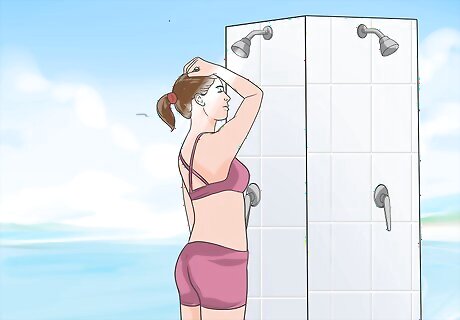
Take the plunge. Just go for it. Jump right in and make sure that your entire body is covered head to toe in cold water. Leaving any areas dry and warm will detract from adjustment, as your body will have something to compare the cold water to.
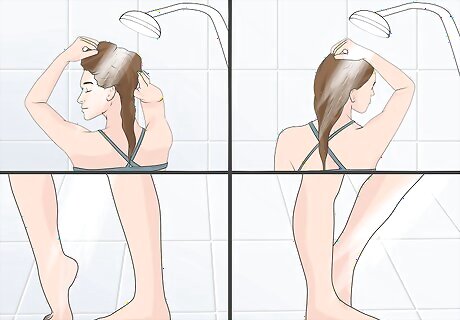
Keep moving. If you are swimming this will be easy, but it can be harder in a shower or bath. Shift your weight and move your feet. Any muscle movement will help kick-start the body's process of thermoregulation and adjustment.
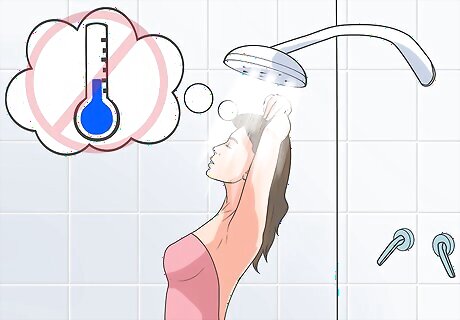
Mentally brace yourself. At first it will be tempting to jump out of the water or turn the temperature up. Don't let yourself. You can build a mental wall against the cold until your body fully adjusts and embraces it. Each time you build this wall and endure the cold it gets easier, both psychologically and physically, due to increasingly efficient thermoregulation.
Understanding Your Body and Using Your Environment

Understand why you feel hot and cold. Normal human body temperature is 37 degrees Celsius. The human body has three types of sensory receptors in the skin: pain receptors, heat receptors, and cold receptors. Heat receptors start to perceive heat above 30 degrees Celsius (and up to around 45 degrees, where pain receptors take over). Cold receptors perceive cold when temperature drops below 35 degrees. As you can see, there is a 5-degree overlap zone that will trigger both heat and cold receptors. You feel cold more acutely than you feel heat because your body has 4 times the number of cold receptors as heat receptors. Many of these are located in the face, ears, hands, and feet. Cold receptors stop functioning below 5 degrees Celsius, when you stop feeling cold and start feeling numb. Your core body temperature can vary slightly, depending on hormonal changes and health.

Understand how your body reacts to temperature. When your temperature exceeds 37 degrees (98.6% Fahrenheit) your blood vessels will dilate, allowing more blood to reach the surface of the skin to be cooled. When your temperature drops, blood vessels contract to conserve body heat. As you regularly experience this sensation, your body will become more efficient at thermoregulation (the temperature control process).
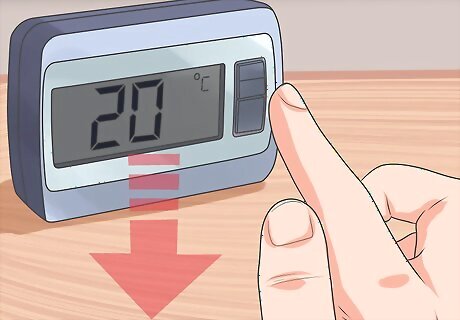
Lower your environment's temperature. Part of the difficulty of getting in a cold shower (particularly in the morning when you have been in bed) is that the shock is exacerbated because your surrounding environment was previously warm. If you lower the temperature of your environment the cold water will be less shocking. Turn the thermostat down a degree or two. This will even save you money in the winter. Have a fan in the bathroom or bedroom. Increased circulation of air under 37 degrees will accustom your body's cold receptors to being activated. Don't bundle up as tight at night. This can be especially helpful if you are having trouble with cold morning showers. The warmer you bundle up, the colder the shower will feel!
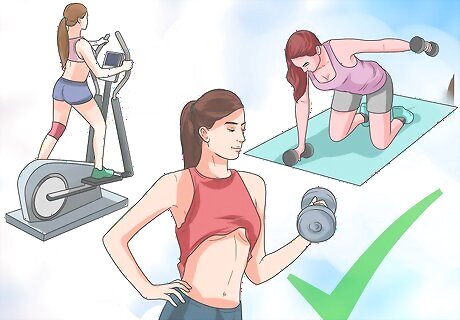
Raise your core temperature to make cold feel better. There are times when the cold can feel good, like when you jump into a pool on a hot summer day or drink a cold beverage after strenuous sports activity. This is because your body is elevated to over 37 degrees and is struggling to lower its temperature. If you raise your body's temperature, you can not only make cold water easier to adjust to, but you can also make it refreshing. Consider high-intensity exercise before a cold shower. Interval or circuit training is especially effective. Your cold shower will have the added benefit of helping your muscles recover!











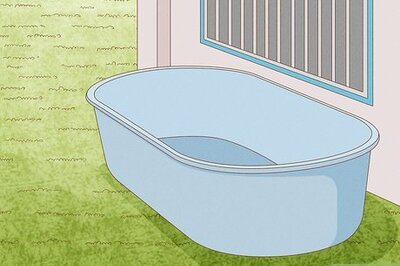







Comments
0 comment